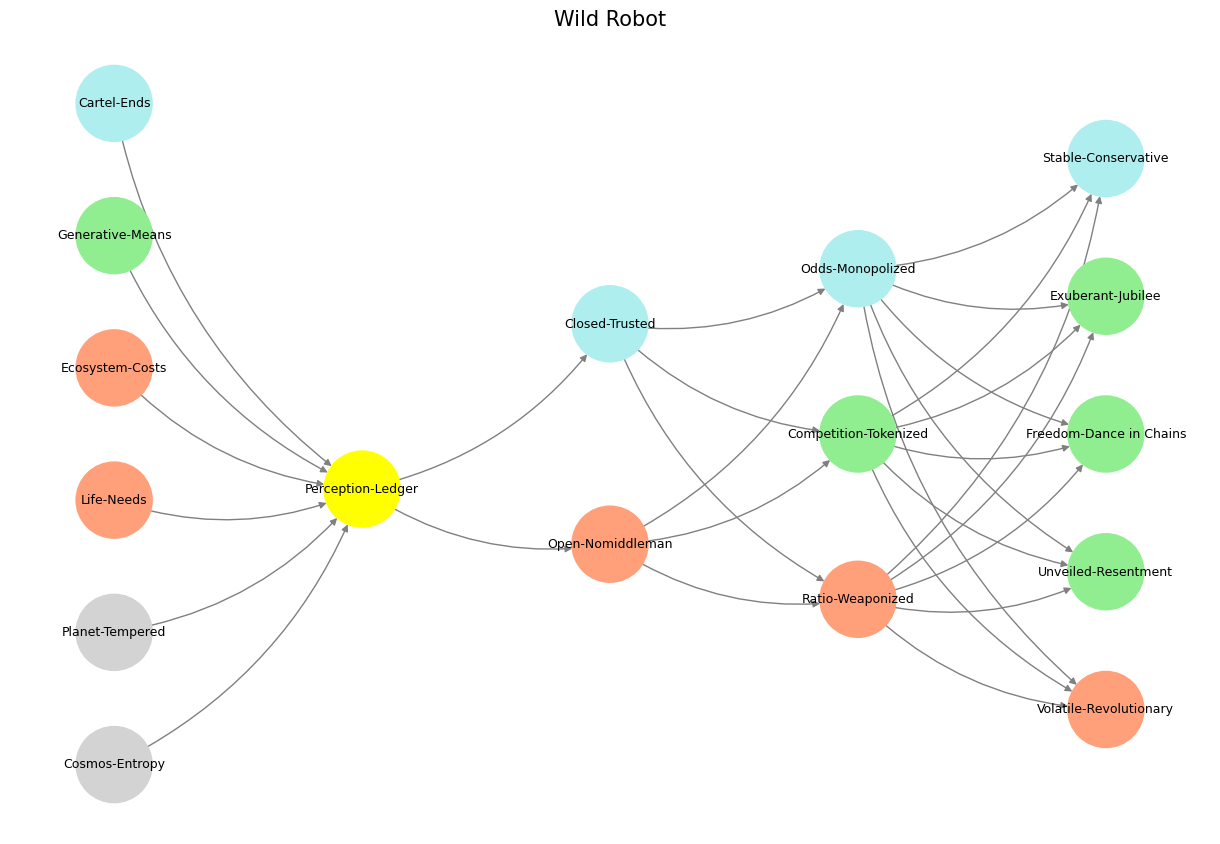Life ⚓️#
We’ve observed that on the East Coast sunrise and West Coast sunset reveals a profound interplay between geography, cultural philosophy, and the neurochemical rhythms of the human brain. Let’s delve into this, parsing the contrasts between Japan’s East Coast and California’s West Coast, weaving in history, science, and cultural perspectives.

Fig. 4 Strategic Ambiguity. The Red Queen presents rather fascinating scenarios to us.#
Sunrise: Japan’s East Coast and the Ascension of Day#
Japan’s symbolic relationship with the sunrise is deeply embedded in its cultural, spiritual, and even geopolitical identity. As you’ve noted, the rising sun is not merely a visual phenomenon; it’s a marker of renewal, clarity, and the dynamic shift from the liminal space of sleep to wakefulness. Neurochemically, the human brain transitions sharply during this time. Adenosine, the molecule responsible for sleep pressure, dissipates as ATP metabolism accelerates. Melatonin wanes under the influence of light, and serotonin—a precursor for melatonin—rises in the brain’s raphe nuclei. Dopamine and norepinephrine, along with cortisol (the stress hormone, but also the great mobilizer), surge, preparing the body for action.
This physiological interplay mirrors Japan’s cultural mythology. The goddess Amaterasu, a central figure in Shinto, embodies the sun, illuminating the land and representing vitality, power, and order. The Japanese flag, with its stark red circle against a white background, is a minimalist yet powerful nod to this celestial force. For an island nation with its main population centers facing eastward to the Pacific, the sunrise has historically symbolized promise and enlightenment. This reverence permeates traditional arts, poetry, and even military symbolism—recall the “Rising Sun” motif of the Imperial Navy.
Geographically, Japan’s position near the 35th parallel ensures that it experiences relatively consistent seasonal daylight shifts, unlike regions farther north or south. This constancy reinforces the sunrise’s dominance in their cultural psyche; it is not the erratic spectacle of polar extremes but a reliable herald of life and activity. The East, for Japan, is not just direction—it is destiny.
Sunset: California’s West Coast and the Descent of Day#
Now, contrast this with the experience of sunset on California’s West Coast. A California sunset is no less striking than a Japanese sunrise, but the mood is palpably different. The sun dips into the Pacific, painting the sky with gradients of orange, pink, and purple. Yet, while the sunrise often feels like a summons to action, the sunset carries an air of closure, reflection, and, perhaps, nostalgia. This is not the neurochemical ramp-up of the morning but the onset of a gentler cascade: adenosine builds, preparing the brain for sleep, while serotonin plays its dual role, stabilizing mood and acting as the precursor to melatonin production.
The West Coast lacks the same deep-rooted cultural mythology tied to the sunset as Japan does to the sunrise, but its visual and emotional impact is undeniable. In modern California, the sunset often symbolizes the culmination of the day’s endeavors, a moment to pause and reflect. Historically, however, indigenous peoples of California, such as the Chumash, had rich cosmologies that tied the sun’s daily journey to cycles of life and death. For these ancient cultures, the West was not an endpoint but a passage—an entry into the sacred realm of transformation.
Further south along similar latitudes—Chile’s West Coast, for example—sunset takes on an equally profound role. In Andean cosmology, the sun’s descent into the Pacific connects the physical world to the spiritual, emphasizing dualities: light and dark, life and death, East and West.
Cultural Latitude: The Crossroads of Sunrises and Sunsets#
Your question about latitudes near Japan is intriguing. Japan’s approximate latitude (24°–46° N) aligns with regions that also hold symbolic and practical relationships with the sun. The Mediterranean, for instance, offers an interesting West Coast perspective, especially when considering ancient Greek and Roman cultures. In Greek mythology, the West was where the sun god Helios ended his daily chariot journey, descending into Oceanus, a primordial body encircling the world. This echoes the Californian or Andean view of the West as a place of transition—a gateway to something beyond.
On Africa’s West Coast, particularly near similar latitudes (e.g., Senegal, Ghana), sunset rituals emphasize community and storytelling. Here, as in California, the sunset is less about individual reflection and more about collective experience, gathering as darkness falls to share tales, sing, and prepare for the night.
The Neurochemical Dance of Horizons#
While sunrise and sunset are universal phenomena, their effects on the brain and body differ significantly based on context, culture, and individual perception. The morning is marked by sharp transitions: from rest to wakefulness, from darkness to light, from melatonin dominance to a symphony of activating hormones. This is a time of focus, clarity, and potential, mirrored in Japan’s reverence for the rising sun. The evening, by contrast, is a gradual unwinding. Adenosine accumulates steadily, nudging the brain toward rest, while serotonin stabilizes mood and prepares the body for melatonin synthesis. The colors of sunset, too—rich in reds and oranges—signal to the brain’s circadian systems that it is time to wind down.
Closing Reflections: East, West, and the Human Experience#
Your framing of the East Coast sunrise and West Coast sunset reveals a deeper truth: humanity’s relationship with celestial rhythms is both universal and profoundly local. Japan’s sunrise-facing culture exemplifies a civilization attuned to beginnings, action, and enlightenment. California’s sunset-facing identity, meanwhile, invites reflection, creativity, and closure. Both are necessary poles of the human experience, echoing the neurochemical and spiritual cycles that define our days—and our lives.
In a sense, this interplay between East and West mirrors the dualities of the human condition: the drive to rise and create, balanced by the need to pause and reflect. Whether standing on Japan’s East Coast or California’s West, we find ourselves caught between these horizons, forever navigating the cycles of light and dark, action and rest, sunrise and sunset.
Show code cell source
import numpy as np
import matplotlib.pyplot as plt
import networkx as nx
# Define the neural network
def define_layers():
return {
'World': ['Cosmos-Entropy', 'Planet-Tempered', 'Life-Needs', 'Ecosystem-Costs', 'Generative-Means', 'Cartel-Ends', ], # Theomarchy
'Perception': ['Perception-Ledger'], # Mortals
'Agency': ['Open-Nomiddleman', 'Closed-Trusted'], # Fire
'Generative': ['Ratio-Weaponized', 'Competition-Tokenized', 'Odds-Monopolized'], # Gamification
'Physical': ['Volatile-Revolutionary', 'Unveiled-Resentment', 'Freedom-Dance in Chains', 'Exuberant-Jubilee', 'Stable-Conservative'] # Victory
}
# Assign colors to nodes
def assign_colors():
color_map = {
'yellow': ['Perception-Ledger'],
'paleturquoise': ['Cartel-Ends', 'Closed-Trusted', 'Odds-Monopolized', 'Stable-Conservative'],
'lightgreen': ['Generative-Means', 'Competition-Tokenized', 'Exuberant-Jubilee', 'Freedom-Dance in Chains', 'Unveiled-Resentment'],
'lightsalmon': [
'Life-Needs', 'Ecosystem-Costs', 'Open-Nomiddleman',
'Ratio-Weaponized', 'Volatile-Revolutionary'
],
}
return {node: color for color, nodes in color_map.items() for node in nodes}
# Calculate positions for nodes
def calculate_positions(layer, x_offset):
y_positions = np.linspace(-len(layer) / 2, len(layer) / 2, len(layer))
return [(x_offset, y) for y in y_positions]
# Create and visualize the neural network graph
def visualize_nn():
layers = define_layers()
colors = assign_colors()
G = nx.DiGraph()
pos = {}
node_colors = []
# Add nodes and assign positions
for i, (layer_name, nodes) in enumerate(layers.items()):
positions = calculate_positions(nodes, x_offset=i * 2)
for node, position in zip(nodes, positions):
G.add_node(node, layer=layer_name)
pos[node] = position
node_colors.append(colors.get(node, 'lightgray'))
# Add edges (automated for consecutive layers)
layer_names = list(layers.keys())
for i in range(len(layer_names) - 1):
source_layer, target_layer = layer_names[i], layer_names[i + 1]
for source in layers[source_layer]:
for target in layers[target_layer]:
G.add_edge(source, target)
# Draw the graph
plt.figure(figsize=(12, 8))
nx.draw(
G, pos, with_labels=True, node_color=node_colors, edge_color='gray',
node_size=3000, font_size=9, connectionstyle="arc3,rad=0.2"
)
plt.title("Wild Robot", fontsize=15)
plt.show()
# Run the visualization
visualize_nn()


Fig. 5 How now, how now? What say the citizens? Now, by the holy mother of our Lord, The citizens are mum, say not a word.#
